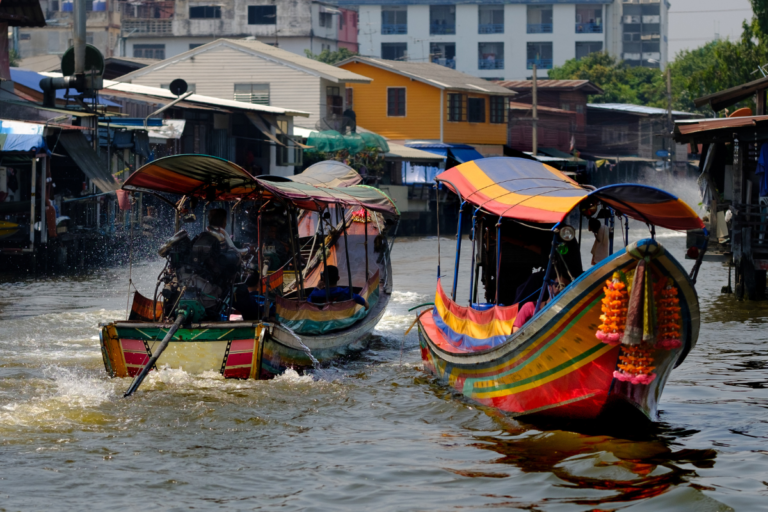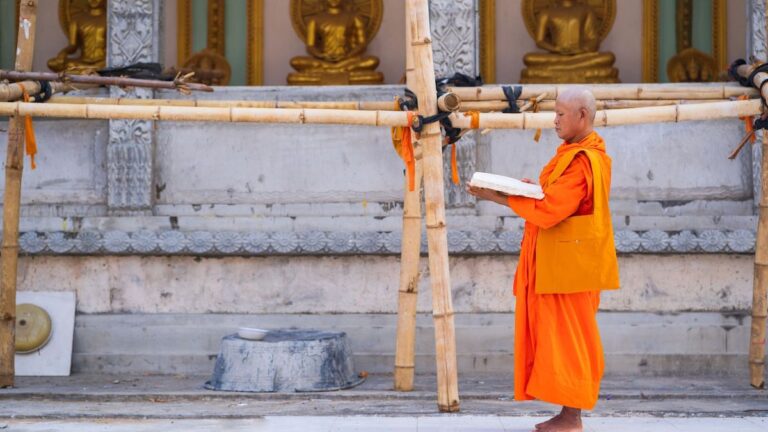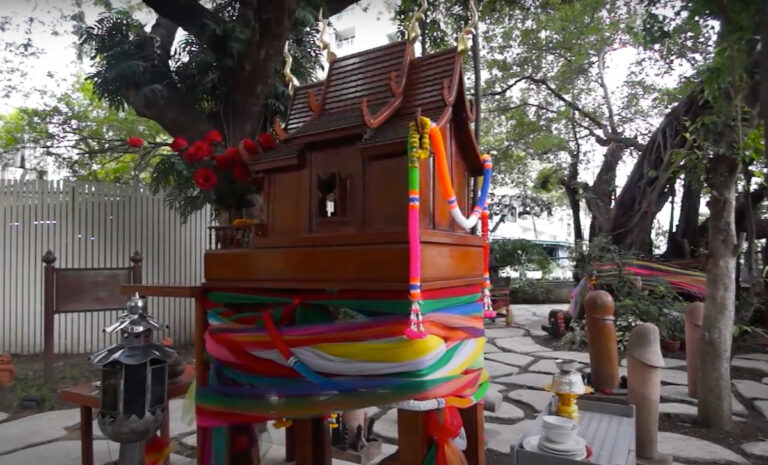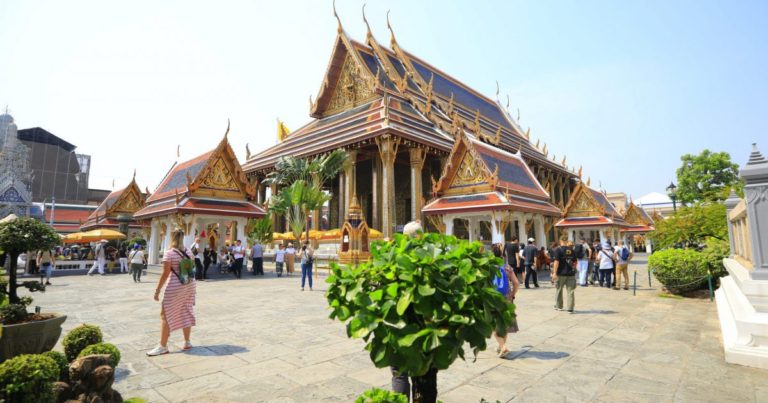Wat Traimit Withayaram Worawihan
Wat Traimit Withayaram Worawihan is a second-class royal temple. It is located in the historic Chinatown district of Bangkok, just a few minutes walk from the Hua Lamphong Station. This magnificent Buddhist temple is particularly famous for housing the world’s largest solid gold Buddha statue, known as the “Phra Phuttha Maha Suwana Patimakon” or the “Golden Buddha.”
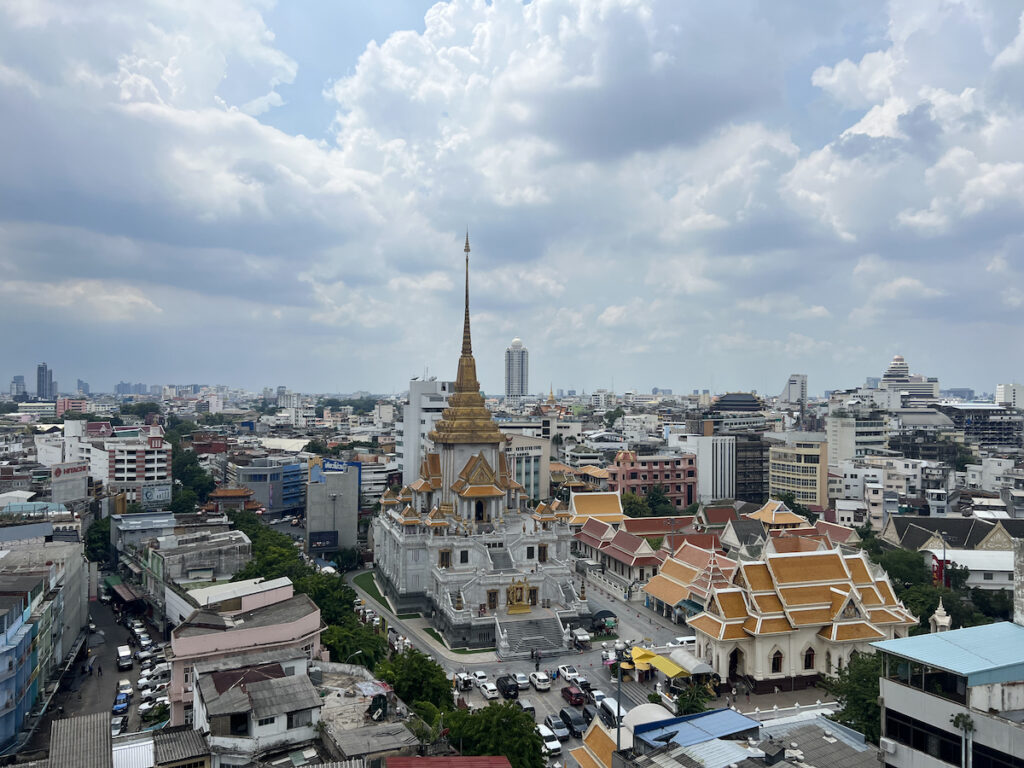
Information for Visitors
Admission fee: 100 baht for the Golden Buddha Statue, 100 baht to see the museum, and 20 baht for a holy water bottle.
Address: 661 Charoen Krung Road, Talat Noi, Samphanthawong, Bangkok 10100, Thailand
Phone: +66890022700
Opening hours: daily 8 AM–5 PM. During religious holidays as well as weekends, Wat Traimit Withayaram Worawihan Temple is very busy with visitors who come to admire the awe-inspiring Golden Buddha.
Dress code: Dress code rules are strictly enforced at the temple. Short pants and sleeveless attire are not permitted. If you find yourself in such clothing, be sure to have a scarf with you or visit the on-site shop where you can rent one for 20 baht.
Importance and History of The Temple
Wat Traimit holds great significance in both its history and its patrons. Frequented by famous Thai socialites, politicians, entertainers, and even members of the Royal family, Wat Traimit Withayaram Worawihan plays an important role in the cultural and spiritual life of Thailand.
Believed to be an ancient temple, its exact founding date remains unknown as there is no evidence to establish it. This temple is of the Worawihan type, and it was most likely constructed during the Rattanakosin period. Originally referred to as Wat Sam Chin Tai, it existed with a mysterious past.
In 1934, under the guidance of Phra Mahakim Suwannachat, who acted as the abbot at the time, the temple underwent large renovations. The Sangha Supreme Council later granted approval in 1937 to further enhance the temple’s condition.
In 1939, there was another transformation of the temple. The temple was named Wat Traimit Witthayaram, signifying a new chapter in its history.
The Golden Buddha Statue
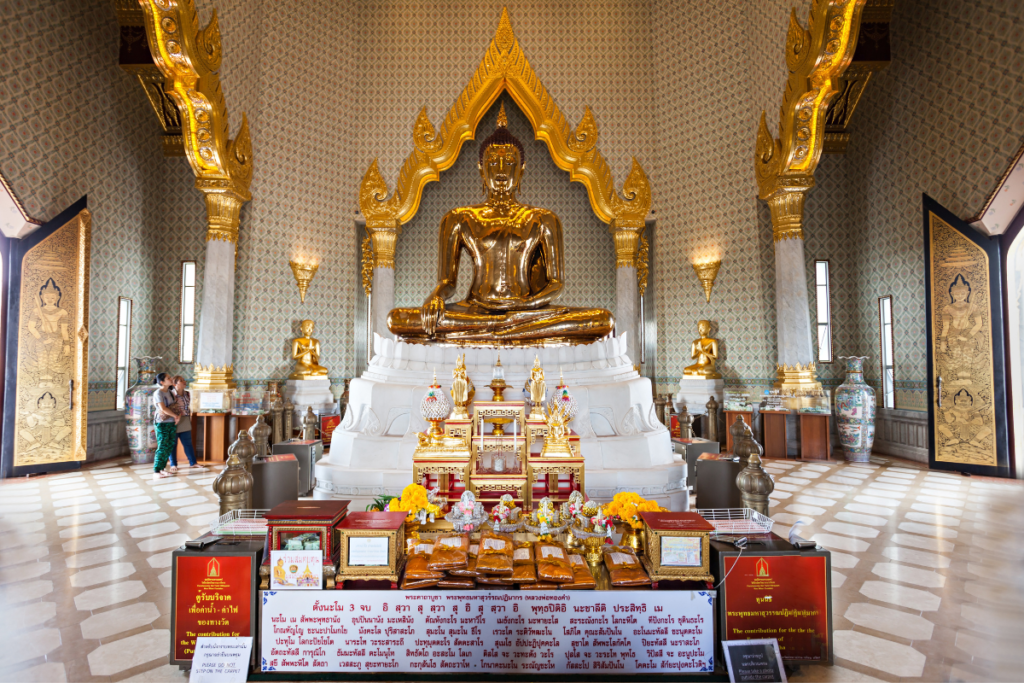
History And Discovery Of The Golden Buddha Statue
The Golden Buddha statue has a captivating history. More than 700 years ago, Sukhothai Kingdom was Thailand’s first kingdom. The Sukhothai Kingdom, a bygone era of grandeur, lasted from 1238 to 1438. This is where our story begins, where skilled craftsmen sculpted a Buddha image with an egg-shaped head, bearing a resemblance to an Indian figure rather than the familiar Thai features we know today.
As the centuries passed, the statue embarked on a journey, making its way from Sukhothai to Ayutthaya around 1403. It was during this period that a decision was made to disguise this precious relic to prevent it from being stolen. The statue was covered in plaster, creating a layer that concealed its true value. Ornate layers of stucco adorned with bits of colored glass protected it from prying eyes.
In 1801 King Buddha Yodfa Chulaloke, also known as Rama I, came to power and named Bangkok as the new capital of the Kingdom. As the city thrived, so did the need for this precious relic to find a new home in Bangkok.
During the reign of King Rama III, from 1824 to 1851, the statue, still veiled under layers of stucco, found a new sanctuary as the principal Buddha image within the main temple of Wat Chotanaram, also known as Wat Phraya Krai, in Bangkok.
But the most astounding chapter in this story was yet to come. In 1954, a new home was crafted for the Golden Buddha in the heart of Bangkok’s vibrant Chinatown. As the statue was gently moved, pieces of terracotta began to fall away, revealing the treasure hidden beneath. What was unveiled left all who witnessed it in awe – a ten-foot-tall masterpiece weighing nearly 5.5 tons, meticulously crafted from pure 18-karat gold.
In 2010, a new chapter began for the Golden Buddha. A new building was completed at the Wat Traimit Temple, becoming a new home of this cultural gem. The once-hidden and protected artifact now stands proudly and is popular among tourists. It is an emblem of Thailand’s rich heritage and royal legacy.
Description and Dimensions of the Statue
Intricately crafted, the Golden Buddha sits in the traditional pose of Bhumisparsha Mudra, with the right hand touching the earth, symbolizing Lord Buddha’s enlightenment at Bodh Gaya and his triumph over Mara.
This awe-inspiring statue reaches a height of 3 meters (approximately 9.8 feet) and boasts a staggering weight of 5.5 tonnes (equivalent to 5.4 long tons or 6.1 short tons).
But what truly makes it stand out is that the statue is composed of 18-karat gold, and its estimated worth is a staggering 250 million dollars. This golden masterpiece not only showcases Thailand’s rich artistic heritage but also gleams as a symbol of extraordinary value.
Materials Used In Creating The Statue
The Golden Buddha is not just a gold-plated sculpture. It’s made of pure gold! However, its history tells an interesting tale of disguise and protection. At a certain point in time, the statue was completely covered with a layer of stucco, and intricate details were adorned with colored glass, a cover that concealed its true material.
The Museum
Among the temple’s attractions, the museum is a must-visit, and it’s a glimpse into the story of the Golden Buddha and the heritage of Bangkok’s Chinatown.
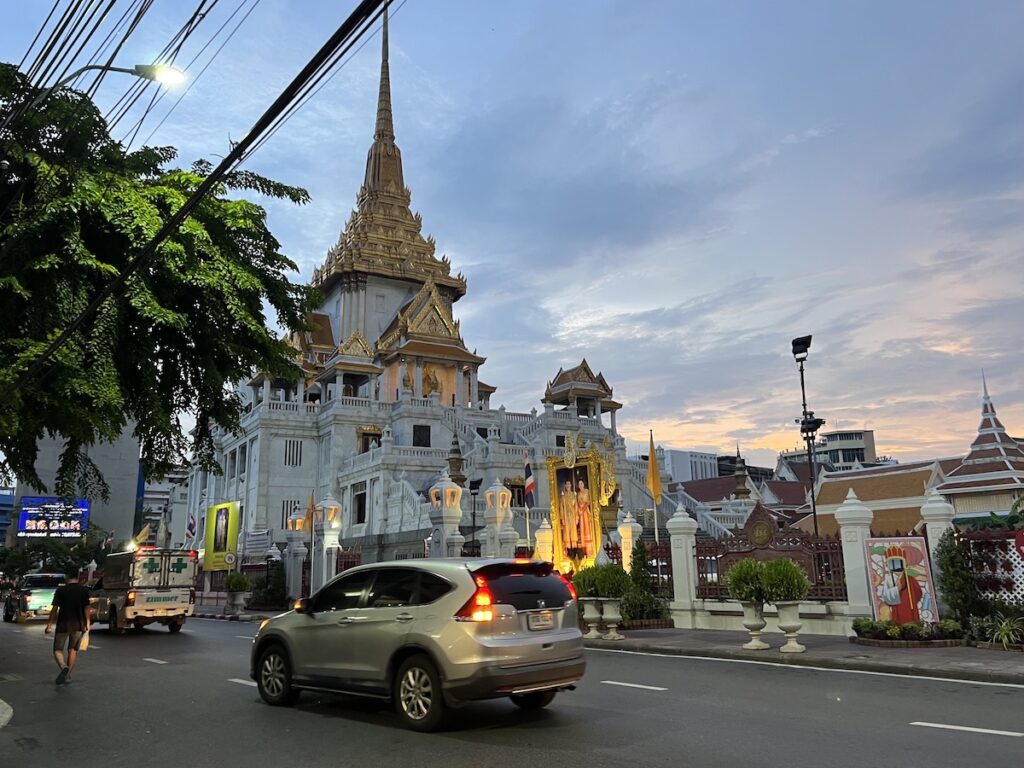
On the first floor, you will find a Chinatown Heritage Centre. It’s like stepping into a time machine that whisks you back to a bygone era. Here, you’ll discover the history of Chinatown and the incredible tales of the Chinese immigrants who populated Bangkok’s streets.
On the second floor, you will discover the history of the Golden Buddha statue. You will learn about the process that went into its creation and the incredible journey it undertook through the centuries. Here, you can also see the pieces of the stucco coating that once masked the statue’s true material. It’s a tangible connection to its storied past, a moment of revelation that’s simply awe-inspiring.
How to Get to Wat Traimit Withayaram Worawihan
- By MRT: You can get there by MRT Subway (Hua Lamphon Station on the Blue Line), take exit number 1, and then walk for a few minutes.
- If you are in Chinatown, you can take a tuk-tuk.
- Otherwise, take a metered taxi or Grab.

